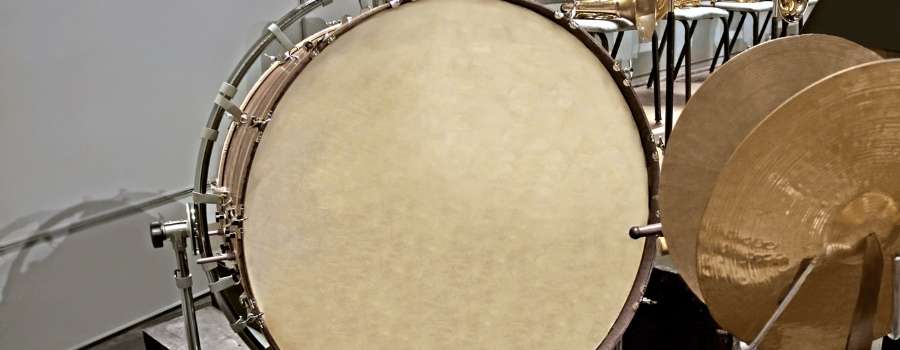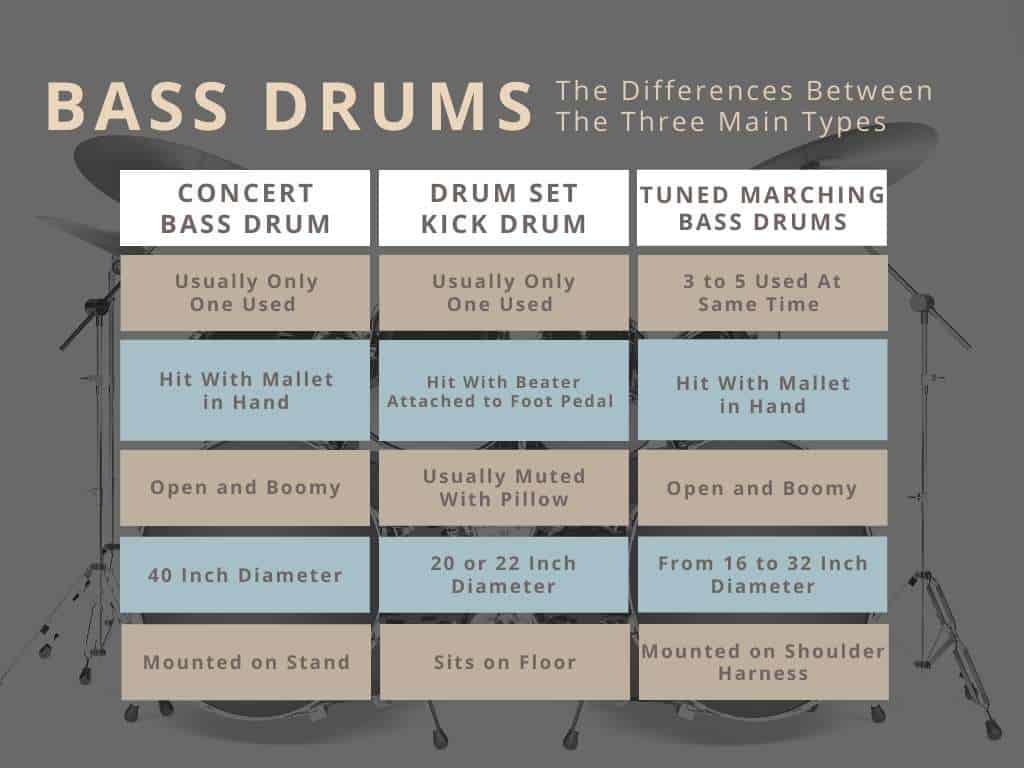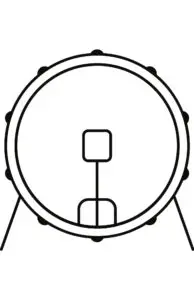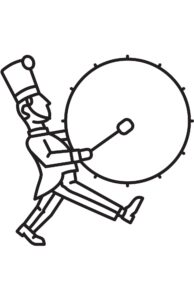
I often hear drummers-to-be asking about the difference between bass drums and kick drum and that got me thinking.
From my composition and large ensemble background, the big drum at the back of the orchestra has always been the bass drum and I’ve heard and referred to the bass drum on a drum set as the “kick drum” at least since high school (so 20+ years ago.)
People on drum forums can’t seem to decide, so I spoke to several professional drummer friends and conservatory percussionists to come up with a more universal explanation for what’s the difference between a bass drum and a kick drum?
A bass drum is generally one of three types of drums; a concert bass drum in a concert band or orchestra, the “kick” drum of a drum set, or a tuned set of 3 to 5 marching bass drums in the drum battery of a marching band.
To unpack that a little, the 3 instruments that can be called a bass drum are:
- Concert Bass Drum
- Kick Drum of a Drum Set
- Group of Tuned Marching Bass Drum
The first two are usually what people are wondering about when they want to know the difference between a bass drum and a kick drum, so that will be my main focus…but the tunes marching bass drums are worth a mention since they are also “bass drums.”
Here is a chart with a short list of differences.

Concert Bass Drum

The largest drum of a standard concert band or orchestra is the concert bass drum.
They usually measure from 40 inches to 42 inches in diameter (though models that are 38 inches or 46 inches wide are also fairly common) and are 20 inches deep.
Concert bass drums are typically mounted on a rolling stand on the sides so that it can be tilted in various angles to allow for different playing styles.
Most of the time a player will use a single felt tipped mallet to hit the drum, sometimes using their other hand to dampen the sound.
Occasionally a player will use two mallets when faster playing or rolls need to be performed.
The roll of the concert bass drum is to emphasize a down beat, build tension with a roll, or be used as an effect (canon fire in the “1812 Overture”, for instance.)
Kick Drum

Kick drums are still bass drums…and technically “bass drum” is its proper name, though these are significantly smaller than concert bass drums…roughly half the diameter coming in at 20 or 22 inches on average.
Unlike concert bass drums, a kick drum will have an air hole (called a porthole) on the front drumhead to allow air to escape when the beater hits the back drumhead.
What does a porthole on a kick drum do?
- Cuts down on the bounce-back of the beater which helps avoid foot fatigue and double kicks.
- Take some of the “boom” out of the sound and gives a sharper attack.
- Help the initial “thud” project better.
- Makes setting drum microphones easier.
Drummers will almost always put something into their kick drum to help take some of the “boom” out of the sound. Since a kick drum will help drive the beat of a tune, its attack needs to be sharp and pronounced. A pillow, blanket, or kick drum mute is often what’s used, and it is positioned so that it touches the drum head behind where the beater hits.
The term “kick drum” got its start in early recording studio days when mix engineers and technicians needed an easy way to differentiate the bass guitar from the bass drum.
Concerts and recording studios are usually a mess of wire snakes and cables, each (hopefully) labeled so that they can be run to the correct channel of the mixer. To keep things simple, rather than writing “bass drum” on the cable tags or mixer board engineers started using “kick” which itself probably started since the bass drum is operated by a foot pedal…kick drum just sounds cooler than foot drum.
This terminology became handy for people giving directions to the mixer board operator, being able to say things like “raise volume of the kick,” or “lower EQ on the bass.”
Tuned Marching Bass Drum

Marching bass drums act mainly like concert bass drums however, a group of 3 to 5 (and sometimes up to 8) of them is used within a marching band battery (what the percussion section is called.)
There are two main reasons so many bass drums are used, volume and melodic reasons.
The cool thing about marching bass drums is that different sized, and therefore differently tuned, ones are used.
Marching bass drums are universally 14 inches deep and then are built-in 2-inch increments starting with a 14-inch diameter and going up to 36 inches…though, you can find some that go to 40+ inches.
How they are tuned is up to the bandleader and drum major, but they will usually be tuned to notes based on the key of the tune that they are playing.
The two last major difference I want to mention is how they are mounted and played. Unlike concert bass drums and kicks drums, marching bass drums are meant to be carried around by the player via a shoulder harness, though they will sometimes be mounted to a frame like a concert bass drum if the battery isn’t marching but is instead situated on the sidelines (called the pit.)
Like concert bass drums, marching bass drums are played by the drummer hitting it with a mallet and sometimes two mallets…one on each side. The main difference here is the firmness of the mallet, with marching bass drummers usually opting for a more firm mallet to give a sharper, more defined attack.
